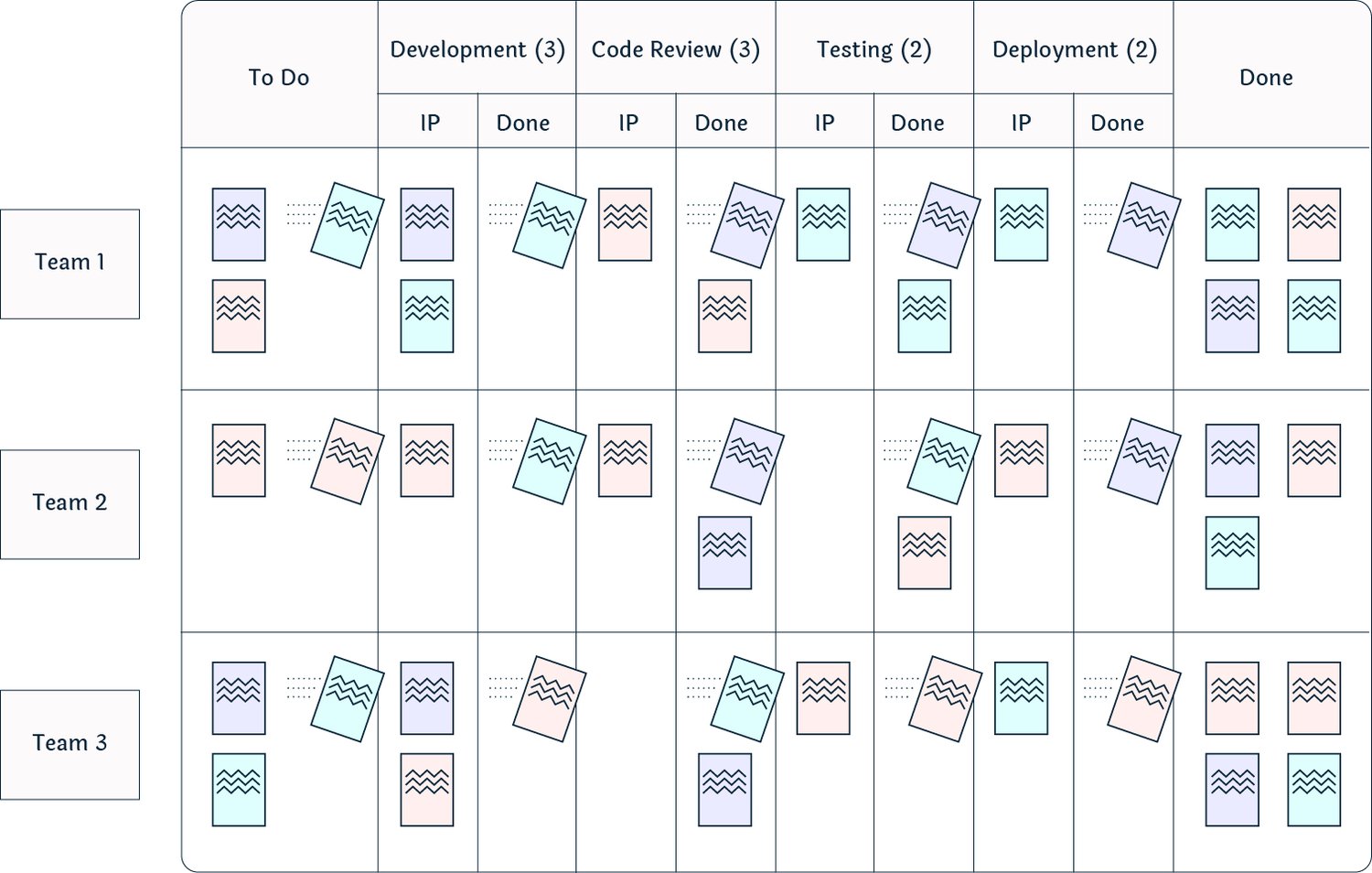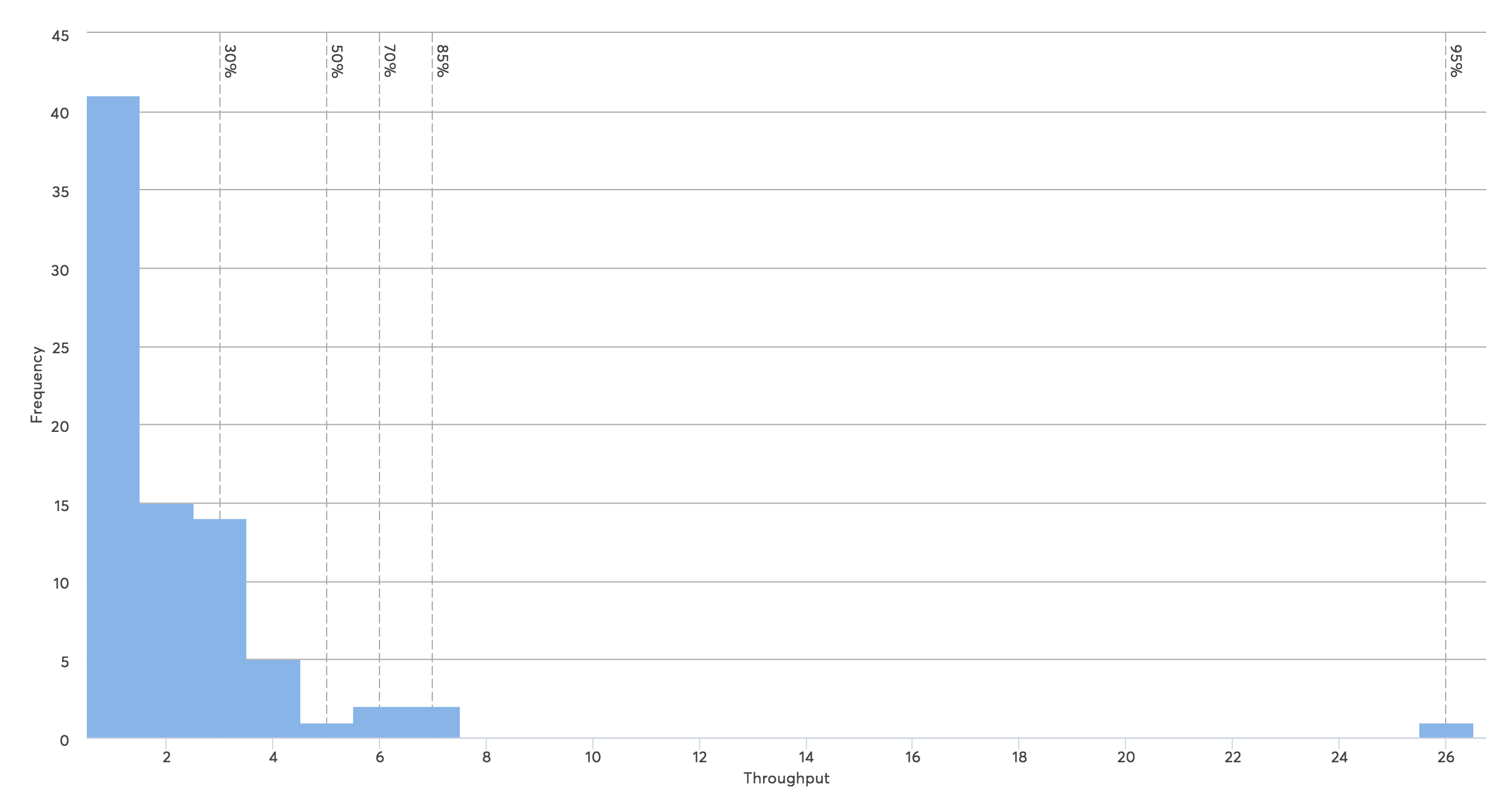Kanban is a method applied across all fields of work to help teams drive down costs and become more efficient by visualizing and improving workflows. Kanban gives you the flexibility to build sustainable competitive advantage and empower your team to accomplish more, faster. In this article, we’ll take a look at 10 benefits of Kanban for your business.
1. Better visibility
Visualization is an important Kanban practice, and the most recognizable feature of the method is the Kanban board. Every project has a backlog of tasks to get through, and a series of process states that a task must pass through before it is delivered. Using the Kanban board, everyone can instantly see how tasks are moving through the process. The simplicity of its visual presentation enables you to easily spot bottlenecks while they are forming.
2. Improved efficiency
Every product manager wishes they could get more done. Throwing extra resources at a problem is a possible solution when there’s some room in the budget, but what if you could do more with what you already have? The most obvious benefit of using Kanban is improved flow efficiency that happens shortly after the method is implemented into your organization.
Visualizing your process will highlight areas of inefficiency very quickly. Once you’ve identified your problem, it is time to start asking questions! Bottlenecks, stalled tasks, and too much work in progress are clearly visible on the Kanban board. Each obstacle you eliminate makes your process smoother and more efficient.
3. Increased productivity
Improved efficiency naturally leads to the next Kanban benefit, which is increased productivity. Kanban benefits your productivity by shifting the focus from starting work to finishing work.
In Kanban, cycle time and throughput are the key productivity metrics. Cycle time measures how long it takes for a task to pass through your process. Throughput measures how many tasks are delivered during a certain time period. Tracking your cycle time and throughput consistently shows you how your productivity changes over time. The faster the tasks can move through your process, the more tasks can get completed!
4. Preventing team overburden
Traditional management methods rely on planning upfront and pushing the work on to your team. This results in teams struggling with more work than they have the bandwidth for. Kanban suggests the implementation of a pull system – the team pulls tasks into the workflow only when they have the capacity to do so.
One of the core Kanban practices is imposing work in progress limits on each process state. When the WIP limit is reached, no new tasks are allowed to enter that state until another task has left. WIP limits prevent teams from working on too many tasks at the same time.
WE ARE EGG-SITED TO GIVE YOU
30% Discount on Our Sustainable Predictability Program
Use the code EASTER22 at the checkout to apply your discount. This limited-time offer expires on 30 Apr!
5. Increased team focus
You may think that multitasking makes you more efficient, however splitting your attention – known as context switching – comes at a cost. Context switching can cause from 5 to 30 minutes of wasted time per task, depending on the task and person involved.
With WIP limits in place, no new tasks are allowed to be pulled into a process state before another task has been finished. Kanban benefits team members by letting them focus on a single task at a time rather than having their attention split between multiple work items.
6. Reduced waste
Eliminating or reducing waste is a cornerstone of lean management. It was an integral feature of the Toyota Production System, the ancestor of modern Kanban. Waste is defined as any action that uses resources without adding value. Value refers to something that the customer is willing to pay for. Many activities would not be classed as “value-adding” according to these criteria but are nevertheless essential to delivering quality products. The area to target is a nonessential waste.
Lean management forefather Taiichi Ohno identified 7 wastes to eliminate in a manufacturing environment related to time, effort, and materials. In knowledge work, your waste will come in the form of effort or time. Kanban drastically benefits waste elimination by reducing waiting time – idle tasks and queuing states are prime targets.
7. Flexibility
For many companies, the strive for business agility is driven by the need for flexibility. Especially for early-stage companies, the freedom to respond swiftly and decisively to your customers’ needs and competitors’ actions is essential to successful growth.
With no prescribed phase durations, features are released as soon as they are completed. By choosing directions with a Kanban roadmap rather than relying on a rigid general project plan, product managers are free to reassess immediate priorities based on changes in the market. The Kanban Method suggests an approach of backlog management that helps teams become more self-managed while bringing transparency and consistency to the decision-making process.
In a constantly fluctuating market, your business processes need to be flexible. Responding quickly to demand is just as crucial as responding to market changes. Using Kanban gives you the flexibility to build a sustainable competitive advantage.
8. Improved collaboration
Who knows the most about your process? The people working on it every day. Kanban benefits your team by encouraging frequent collaboration. From organizing the priorities of the day with daily Standup Meetings to deciding the direction of the business in Strategic Reviews, all team members are constantly being encouraged to work together and give their opinion on how to improve current processes.
The different Kanban meetings ensure that stakeholders in different areas can exchange relevant information, brainstorm solutions, and collaborate on out-of-the-box ideas.
9. Improved company culture
Strong collaboration between team members, managers, stakeholders, and customers leads to improved morale and inclusive company culture. Everyone’s opinion is important and valuable.
Independence and initiative are encouraged, allowing team members to unfold their creativity and talents. A workplace culture in which the entire workforce is focused on continually improving quality, productivity, and customer satisfaction is known as a Kaizen culture.
10. More predictability
The number one question asked of product managers… when are you going to be ready? Implementing WIP limits and ensuring the Little’s Law assumptions are met keeps your process operating as a stable system. The rate of tasks being pulled in should be roughly equal to the rate of tasks leaving. A stable system is a predictable system – one that enables you to make data-driven decisions.
In order to fully experience Kanban benefits, it’s important to track historical data using a tool like Nave. Past performance data should be used to analyze your process and make accurate estimates about future delivery dates. Our data-driven forecasts set a goal as well as the probability of reaching that goal. This is invaluable for working out service level agreements with your clients and fostering trust.
Most importantly, Kanban doesn’t require you to revamp your process to begin seeing these benefits. It works by implementing incremental, evolutionary change to make your workflow more efficient and your team more productive.
Have you implemented Kanban in your organization? How has your productivity and efficiency changed? What benefits have you noticed? Tell us about your experience in the comments!
This post is republished with permission from Nave. Nave uses data from TopLeft to make agile charts for analyzing workflow efficiency and identifying areas for improvement in your team. Learn more here.


